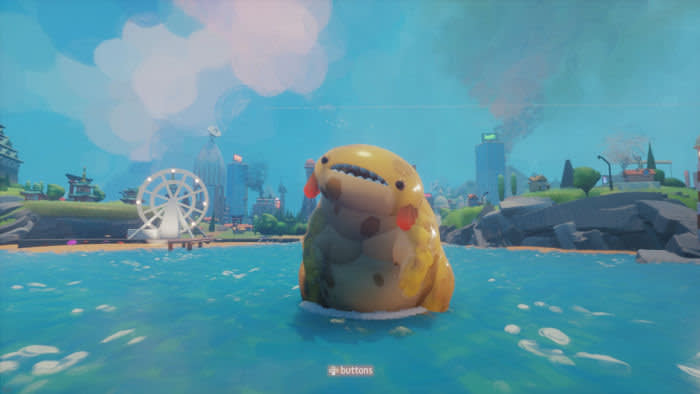When I watch my housemate paint, sitting in the sun-dappled cupboard we call a “studio”, I sometimes get the urge to join her. Though not artistically gifted, I get the basics: apply paint to brush, then brush to canvas. My result might not be any good, but at least it’ll be a painting.
We can all learn rudimentary painting, photography or guitar just by watching. Not so with games. Video game development is a complex multidisciplinary endeavour requiring visual and audio artists, scriptwriters and an army of coders and engineers. Even indie developers need considerable technical knowledge. I wouldn’t know where to start.
This is a shame, because over the years I’ve had ideas for games. One was an old-school arcade fighter based on psychoanalysis: you play a dapper Carl Jung fighting through levels of the unconscious, battling phantasms and solving trauma puzzles, building up to a big fight with Sigmund Freud. Then as a surprise final boss, the real enemy: yourself.

Even though I can’t code, there are game creation tools for hobbyists that could make my game idea a reality. These are meant to dismantle the high barrier of entry for game design, turning the player into a creator. Such platforms have been around since the 1980s but have become more popular and sophisticated recently as the internet allows users to share creations and play other people’s amateur games.
In Super Mario Maker, Nintendo invites you to tinker with its peerless platforming formula, building your own levels, placing every mushroom and making each jump as punishingly pixel-perfect as you please. Another game-making platform is Roblox, with more than 100m monthly users who skew young, mostly between nine and 15. The user-created games are basic, sometimes even broken, but considering they’re made by kids and played online with friends, it’s all part of the fun. The most popular creations are decidedly un-fantastical, boiling down to everyday grown-up activities such as going to a dance or working in a pizza parlour.
Developers of these tools have the challenge of making game design not just accessible but fun. One company stands out: Media Molecule, whose LittleBigPlanet series is packaged with a robust level creation tool that players have used to share more than 10m different levels online. Its new project is even more ambitious. Nine years in the making, Dreams is a YouTube-like hub that offers a whole suite of design tools. It takes a while to learn the ropes, though — after hours of tutorials I still find myself stuck making coloured boxes.

Instead I turn to Dreams for browsing the works of more talented and dedicated creators. There are impressive games such as Ruckus, in which you play a cutesy Godzilla-like monster destroying a city, and Red, a side-scrolling fighter which is satisfyingly local to London, including a grime soundtrack, fights on the Tube and health bonuses from boxes of fried chicken. There are plenty of oddities on the platform, too, including beautiful digital art which isn’t meant to be played, countless recreations of existing games and movies, and a hyper-realistic hot dog. Most of these feel like sketches and experiments, with only a handful standing out as games that you might actually pay for.

The thorny question of ownership hovers over the Dreams community. As it stands, no matter how much sweat and love you pour into your creation, you can’t take it off the platform or profit from it. Media Molecule is tentatively allowing creators to apply to use their creations for business purposes, but at the moment you still need special permission to acquire the rights to your work. As with social networks, Dreams is fuelled by the creativity and energy of its users, who, in generating content for free, become both consumer and producer.
As a game design tool, though, Dreams establishes a new benchmark. It also boasts a remarkably kind-hearted online community with members who often end their posts with sincere thanks to Media Molecule for creating the platform. It will be a while before I share my creations with them, however. I’ve spent the past hour adjusting the bristles and tint of Jung’s moustache. Maybe by the end of the lockdown I’ll have got it just right.
https://www.ft.com/content/df5ec096-78ab-11ea-bd25-7fd923850377
2020-04-07 11:42:49Z
CAIiECCl7XHkU18CWvKxMnbmQU0qFwgEKg8IACoHCAow-4fWBzD4z0gw0tp6
Bagikan Berita Ini














0 Response to "When the aim of the game is to create a new game - Financial Times"
Post a Comment